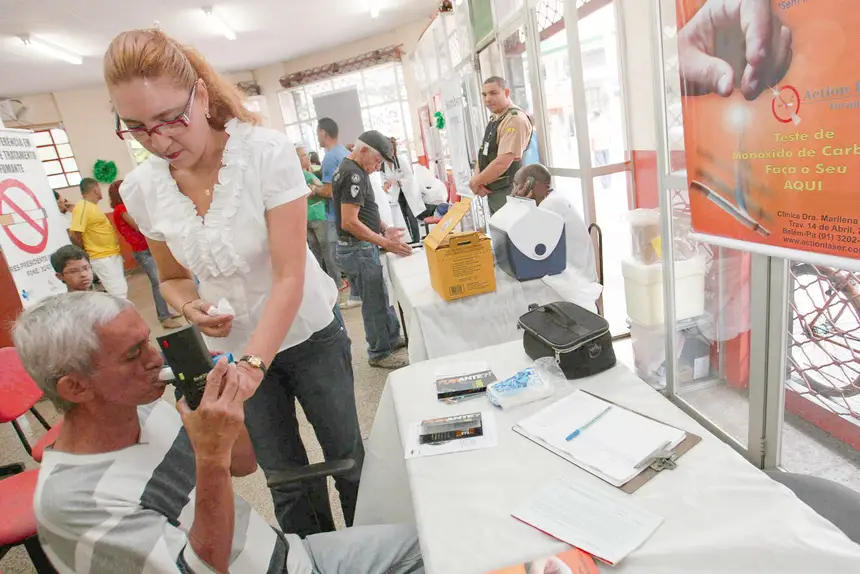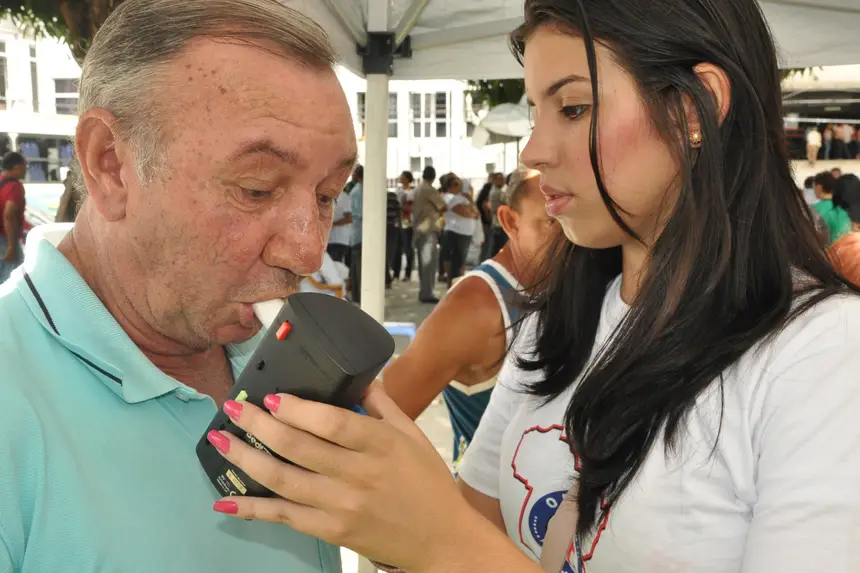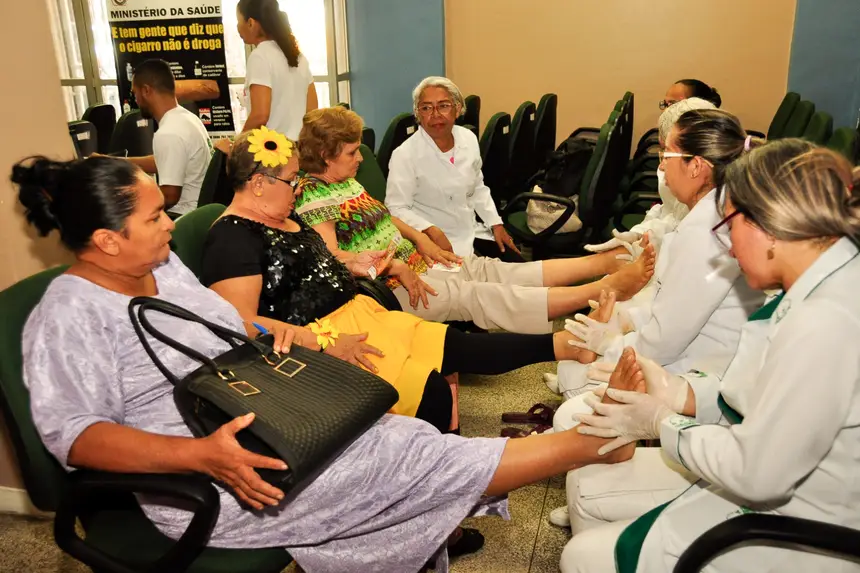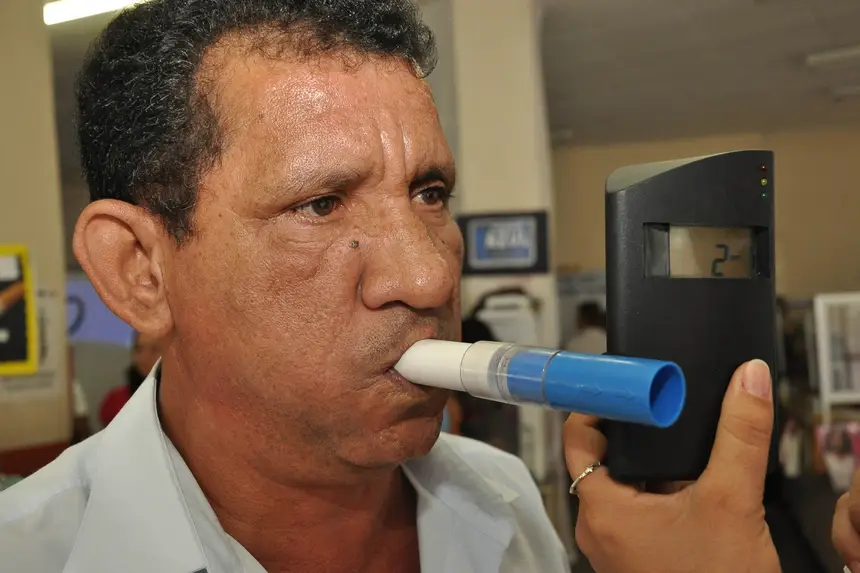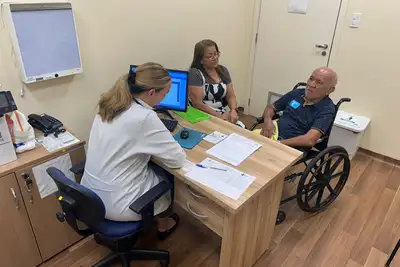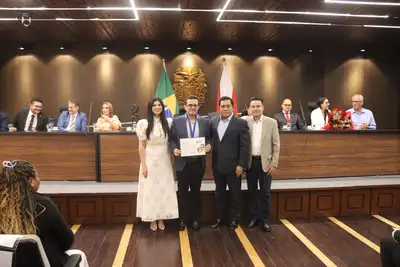Sespa warns about the dangers of smoking for health through the August White campaign
The Secretariat emphasizes that smoking is recognized as a chronic disease caused by dependence on nicotine present in tobacco products
In commemoration of the National Day Against Smoking, August 29, the State Secretariat of Public Health (Sespa) highlights the serious health risks caused by smoking. The secretariat supports the national August White campaign and promotes awareness for the early diagnosis of lung cancer, largely associated with tobacco dependence.
Sespa provides treatment to the smoking population through the Reference Center for Smoking Approach and Treatment (Cratf), maintained at the Specialized Reference Unit (URE), on Presidente Vargas Avenue with Osvaldo Cruz Street, downtown Belém.
In 21 years of operation, the Reference Center has already served more than 6,500 people and records an average of 30 patients seeking care each month. At Cratf, treatment begins with exams that will identify the patient's smoking history and continues with the admission of the person into a group with other smokers for the start of treatment, which consists of cognitive behavioral approach.
'Individual assessment is necessary for medication use,' points out Sespa
Sespa explains that medication prescription is complementary, indicated to minimize the symptoms of withdrawal syndrome. Therefore, an individual assessment of the need for medication use becomes necessary, due to the various types and degrees of dependence.
The secretariat emphasizes that smoking is the main risk factor for lung cancer, responsible for more than 90% of cases, according to statistics from the National Cancer Institute (Inca). Inca's research also indicates that tobacco smoke contains more than 7,000 compounds and chemicals, and at least 69 of them cause cancer.
Public data from the Oncology Panel of the Ministry of Health indicate that cases of malignant neoplasms of the bronchi and lungs are declining in Pará: in 2023 there were 236 new cases. In the following year, 184 people were diagnosed with the problem, and by August 15, 2025, another 39 new cases.
Exposure to smoke contributes to health risks, highlights doctor
Pulmonologist Dr. Fátima Amine, who coordinates the Reference Center for Smoking Approach and Treatment (CRATF), warns that, in addition to direct tobacco use, exposure to passive smoke and toxic chemicals, such as agricultural pesticides and solvents, also contributes to the risk.
Fátima also highlights that, in the last two decades, the perception of cigarettes has changed due to campaigns that have managed to restrict advertising around the glamorization of smoking. On the other hand, other challenges have arisen with the advent of other smoking devices, such as electronic cigarettes and vapes.
“Current efforts focus not only on preventing new cases but also on providing support to those struggling with dependence,” adds pulmonologist Dr. Fátima Amine.
Sespa offers training for the municipal health network
The Secretariat provides training for health professionals in municipalities for the implementation of the smoking treatment program in the SUS at Basic Health Units (UBS). It also supports the realization of educational campaigns and outreach actions to prevent initiation and encourage the adoption of healthy behaviors and lifestyles.
“The number of people seeking anti-smoking services in the State has increased due to information about the harms of tobacco through educational campaigns not only on specific dates, in legislative actions that guarantee the prohibition of smoking in closed collective environments, health warnings on cigarette packs, among other actions,” explains the coordinator of the Chronic Non-Communicable Diseases/Smoking Control Program at Sespa, Silvia Corrêa.
According to the technical reference of the National Tobacco Control Program - PNCT, smoking is considered a disease since the last revision of ICD 10 and is part of the group of mental and behavioral disorders due to the use of psychoactive substances and is associated with chronic non-communicable diseases, as a risk factor for the development of other diseases, mainly cardiovascular diseases, neoplasms, chronic respiratory diseases, tuberculosis, gastrointestinal ulcers, sexual impotence, infertility in women and men, osteoporosis among many others.
See tips for quitting tobacco:
* Seek professional support, medical guidance, and join smoking cessation programs that offer specialized support and effective strategies to quit smoking
* Identify and avoid triggers, and recognize the moments, activities, or emotions that usually trigger the desire to smoke and find alternatives to cope with these situations.
* Stay active. Regular physical exercise helps reduce the urge to smoke, but also serves as another source of pleasure, improves mood, and promotes overall well-being.
* Adopt a healthy diet, prioritize nutrient-rich, low-calorie foods, avoiding the consumption of ultra-processed foods and those high in sugars and saturated fats.
* Find social support, share programs with friends, family, or support groups, finding comfort and motivation in the company of people who understand your challenges.
Service:
To access Cratf, just go to the center next to the URE on Presidente Vargas, in Belém, at Presidente Vargas Avenue, No. 513, between Aristides Lobo and Osvaldo Cruz Streets. Service is available from Monday to Friday, from 7 am to 5 pm.


